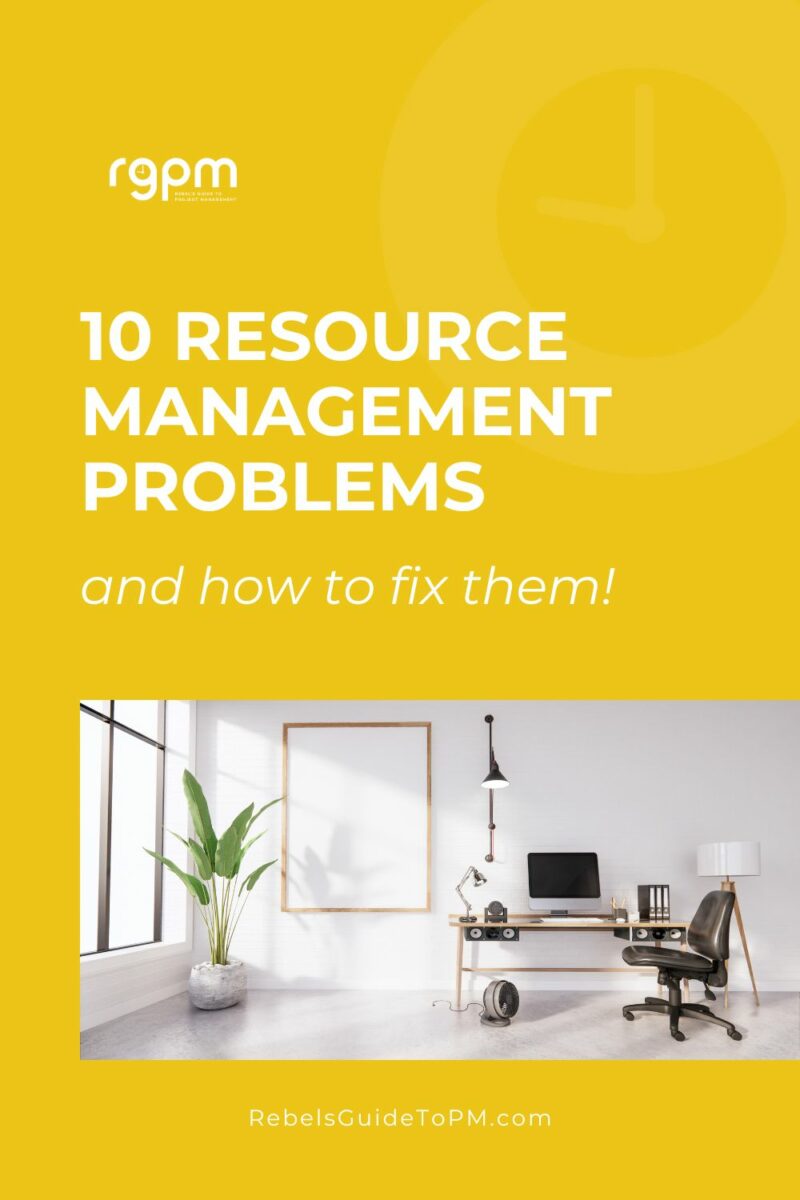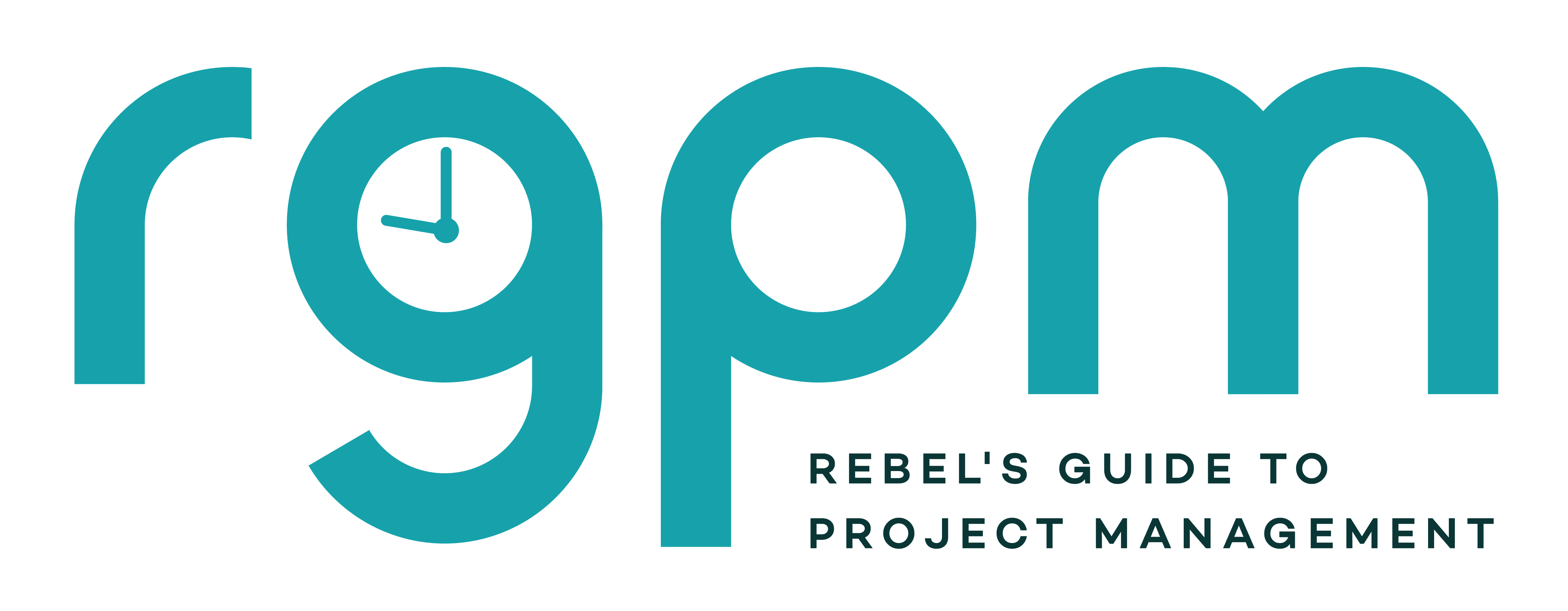10 common resource management problems and how to fix them
This blog is reader-supported. When you purchase something through an affiliate link on this site, I may earn some coffee money. Thanks! Learn more.
I mentor project managers, and the types of problems that people come up with on calls are not technical issues for the most part. Mostly, people want to chat about other people. Or “resources” as we unkindly call people in project management.
Stakeholders, project team members, the colleagues doing the actual work: these are all humans with their own To Do lists, objectives set by their managers and personal and professional goals.
Securing the right resource (and enough of it) is a huge headache for PMO leaders and project professionals. I can’t promise to make all your worries go away, but I can share with you the top resource management problems we see in project management so you can be ready to deal with them when they happen for you.
Why is effective resource management difficult?
Resource management is difficult because work is unpredictable and people aren’t very good at estimating! That’s it really – the challenges aren’t rocket science.
Project leaders need to balance the right amount of resources and funding to complete the work effectively. Organizational culture, management expectations and lack of the right software to provide visibility into the problem all contribute to the headache.
Get fast & free advice from the experts at Crozdesk.com. Crozdesk's small team of dedicated Project Management software enthusiasts will compare 360+ products for you. Tell them your requirements and they'll match you with the right expert who can help.
- No Obligations
- Free Service
- Exclusive Discounts
- Expert Advice
- Minimal Time Commitment
- Get a Custom Comparison Report
10 Resource management problems (and solutions!)
We all have limited resources to do our projects, so it’s to be expected that the route to successful project delivery isn’t exactly smooth where people are concerned.
I’m sure you can think of some poor resource management examples. Here are some (anonymized!) from my experience and that of my mentees:
- Not allocating enough resource to a project so it was always going to be late as the schedule wasn’t achievable. Plus the team had to work overtime (and still didn’t get it done). They should have extended the dates if people weren’t available.
- Not including the right stakeholders so a crucial piece of functionality wasn’t properly tested by the right people. They should have worked out what resources were really needed and secured support.
- Not having enough work for someone to do to the point that she started looking for other jobs because her project work was so unfulfilling.
Here’s another from my work that’s not really poor management, but it did cause us some problems.
A technical expert was needed on a project, but because he was a contractor he had quite a lot of flexibility over how he worked and when he took time off. He discovered his house had woodworm (if I remember rightly), and they had compromised the integrity of the floors in his house. His whole family had to move out, so he was busy with that and took a couple of weeks off work, which impacted our ability to deliver to our expected timeframe.
Below are some of the most common resource challenges. I suggest adding the relevant ones to your risk log so they are constantly under review.
1. Resources are assigned inconsistently
How are your resources assigned? If resources are assigned to project work without using any criteria, it can affect project prioritization.
People will be assigned to lower priority work, meaning you don’t have the right skills or people available to work on your strategic initiatives.
Resolve by setting criteria on how resources are assigned – by the PM, product owner, team leader etc. and define how leaders can secure resources.
Resource allocation should be done consistently. The PMO can lead on this but everyone will need to follow the process for it to work.
2. Resource utilization is not optimized
Some colleagues are busy and some are not busy! I’m sure you’ve had days like me where I’ve been rushed off my feet and yet a colleague is over by the coffee machine taking the time to have a good old catch up. Meanwhile, I’m wondering whether I can afford a bathroom break.
Optimizing resource utilization means making sure no one is overstretched, and that work is appropriately allocated to people with the time to do it!
Resolve by resource optimization reports from your project management software. Use your tools to track time and create clarity about where there is capacity for people to take on additional work.
Use resource leveling to manage.
3. Resources don’t have the right skills
This challenge happens when there are not enough people with the right skill sets.
Allocating work to team members who are not skilled in the topic (or at the right level of skill) typically means that you end up with more mistakes made or the work taking longer.
You might be prepared to accept that, for example, if you have a senior team member checking their work, or you allow for extra time so they can learn on the job and be faster next time. But if you aren’t factoring that in, your project quality and schedule will drift.
Resolve by forward planning what skills are needed and ensuring those skills are available; training or buying them in. Note that just being available is not enough of a reason to allocate someone to the work, because availability is not a skill set!
4. Resource utilization is not tracked
If utilization of resources is not tracked, you can’t tell what people are working on and how long they are spending on tasks.
Resolve by using time sheets. I know people hate timesheets! But you’re going to have to do them if you want to make data-driven decisions. It’s essential for professional services organizations.
5. Resources are not forecasted
Do you forecast what resource levels are needed? Many organizations don’t do this, and then the management team is surprised when they haven’t got the people they need in 3 months.
You can’t predict what level of resource is required for future projects, or when future projects can start when resources are available. It can result in unrealistic deadlines.
Resolve by using forecasting and capacity planning reports, getting good estimates from resources and leaders on how long work will take and when it can start.
Resource planning will also help you work out when new skills are needed in the organization so you can recruit or train them in.
6. Resources have high turnover
People leave because the environment created is not suitable for them. This often happens when people are stretched or don’t have the right tools, or their manager does not create a welcoming, supportive, empowered team culture.
After all, people leave managers, not jobs.
Resolve by making sure people are empowered and you collect feedback to continuously improve. Track employee retention.

7. Resources are allocated to conflicting priorities
When this happens, team members don’t know what they should be working on as priorities are not clear.
When this has happened to me, I hope I’ve used good judgement to establish what I should be spending my day on, but who knows?
Should it really be up to the project team member to decide what is the priority project? Or whether they should be spending time on their day job or the project? Most people choose their day job in that situation, and as project people, that’s not what we want!
Resolve through effective communication and sharing priorities. Lack of visibility on what people are working on can be addressed through reporting. That will help you spot any inconsistencies.
8. Managers don’t have visibility
Resource managers don’t know what their team members are working on as there is no visibility on resource data.
I know we can talk to our teams, but sometimes you need aggregated data to see the whole department’s view. This is probably one of the most common resource allocation problems: I don’t know why I’ve left it down here as number 8!
Resolve by giving people access to reporting and tools, promoting transparency. Schedule work around people, not tasks.
9. Resources are not balanced across the portfolio
This is an interesting one, and it happens when one area of strategic benefit is getting a lot more investment/time than other areas. I do think it’s one of the key challenges though.
This happened to me in a past role. I was working with a particular department and there had been such a level of underinvestment that when I told them the project budget for this work, they nearly fell off their chairs! It was money they couldn’t fathom, having only been given peanuts for the past few years.
Still, it was a critical system upgrade, so it had to happen.
What it meant was that the organization was making the choice at the time to not invest in that area and instead divert funding to other areas. Which is a strategic choice to make. But make it consciously, not because you don’t know where resources are going.
Resolve by having portfolio level reporting, and linking resourcing to business goals.
10. Resource risk is not considered
People go off sick or are unavailable at short notice and this isn’t factored into the plans.
It can affect project performance management and the achievement of project goals because you’ll be late with the delivery which impacts customer satisfaction and benefits.
Worth having on your risk register! Although ultimately you can’t do much about it. For one program I led, we made a concerted effort to cross-skill people so that if there was sickness in the team, someone else could step in.
Resolve by focusing on risk and identifying people-based risks. Define ways of working and how the project will be delivered to try to cover this the best you can.
The question of tools
You’ll have seen I have mentioned tools quite a lot in this article, and that’s because, with all my experience over 20+ years of working in project environments, I have never seen an organization manage resources effectively with spreadsheets.
They are outdated too quickly. There is no requirement to update skills or create a resource pool, so people can be allocated to work that best fits their skills.
Resource challenges are universal, but they have simple solutions with the right resource management solution. You’ll also need the mindset change to create new ways of working. It might be simple, but it isn’t easy.
If you need a hand researching or selecting resource management software, Crozdesk is the free service I recommend.
Get it right, and stakeholders will soon see how much easier project resourcing can be.

